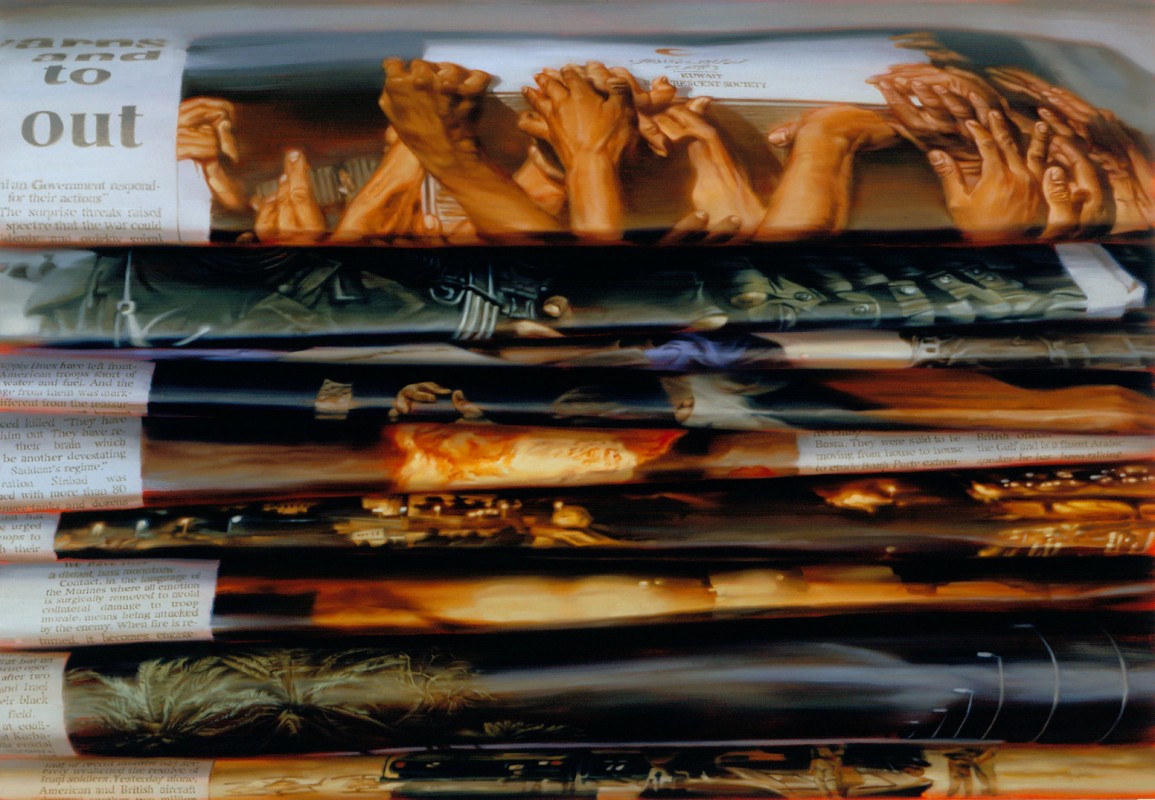 I am a professor at the Department of Art and Art history at Stanford University.
I am a professor at the Department of Art and Art history at Stanford University.
My focus is on studio arts (drawing and painting) and not on art history or applied arts. We encourage students to combine different mediums and to incorporate knowledge from other disciplines in art-making.
I am passionate about making art. Painting is my primary medium; but I have explored other mediums such as photography, video, and installation.
"Fragmentary Views"
In my work, there is a group of paintings titled l “Fragmentary Views” depicting real stacks of newspapers on the shelves of a library. When you look at the side view of a stack of folded newspapers, you are looking at fragments of news photos, words, and phrases from headlines or articles. Every little bit of information gives you a hint of what is happening in that period of time.
In one of my paintings about the Iraq war, you can see the top newspaper showing hands of Iraqi civilians fighting for relief materials; other folded newspapers show snippets of machine guns, explosions, the night scenes of Baghdad, the darkened sky with palm trees, helicopters and armored vehicles. All these fragments put together, represent the different moments that defined the war.
What am I trying to convey through these paintings? To me, they are less about the specific events but more about the way we perceive the world through the media. We perceive world events as fragmented, superficial, sometimes distorted, and chaotic. We are bombarded by bits and pieces of information from the media, but are we really getting the full picture? That is the question I pose in my work. Of course, the work also expresses sympathy for the sufferings of civilians, suggested in ways that are more subtle.
Imagining A Library Cave
 Two years ago, I was invited by the Dunhuang Foundation to be the first artist-in-residence at the Mogao Grottoes in Dunhuang in Northwest China. I developed a project based on one of the caves - the “Library Cave” which once contained tens of thousands of manuscripts, artworks, scrolls, and printed matter on Buddhism, social documents, etc.
Two years ago, I was invited by the Dunhuang Foundation to be the first artist-in-residence at the Mogao Grottoes in Dunhuang in Northwest China. I developed a project based on one of the caves - the “Library Cave” which once contained tens of thousands of manuscripts, artworks, scrolls, and printed matter on Buddhism, social documents, etc.
This cave had materials dating from the 4th to the 11th century. In the early 11th century, the entrance to the cave was sealed. When it was discovered in 1900, the relics were stolen and sold to foreigners, and today, they are scattered in museums around the world.
My idea was to create ink drawings based on my imagination of the now-empty cave to express fragmentation, loss, and trauma. In the project, I combined scholarship with art, I did extensive research into the history and the contents of the cave, and came up with my interpretation -- my imaginative visions of the cave.
I believe art is never isolated, but always connected to the larger world in some way. My paintings of books and newspapers explore the concept of time, memory, and history. The Dunhuang project is connected to a specific cultural history of China and part of it is also related to Buddhist philosophy and cosmology.
My advice to young people interested in art is to follow your passion, even if you do not know where the road will lead. I was idealistic and perhaps not so practical-minded, and if I could go back in time, I would do it all over again.







